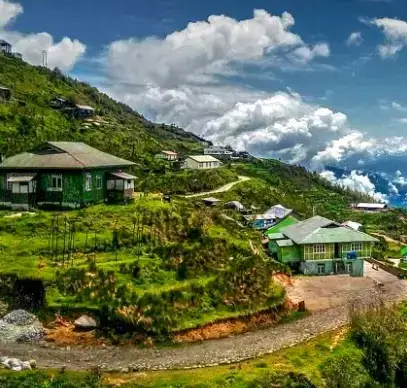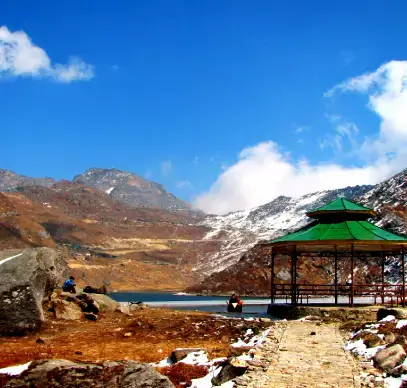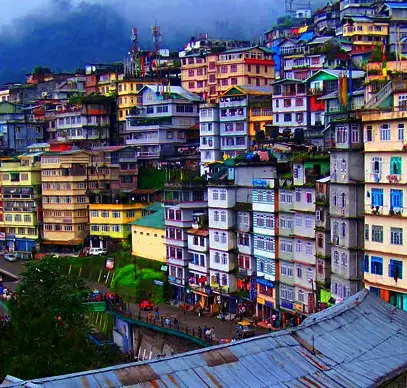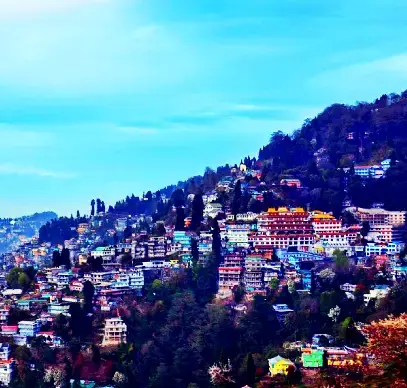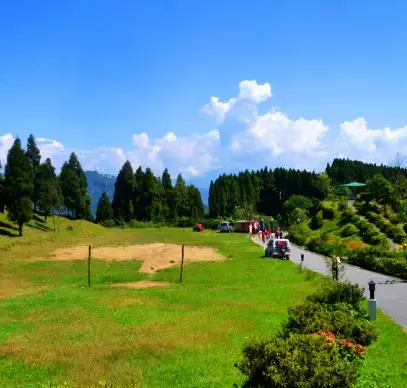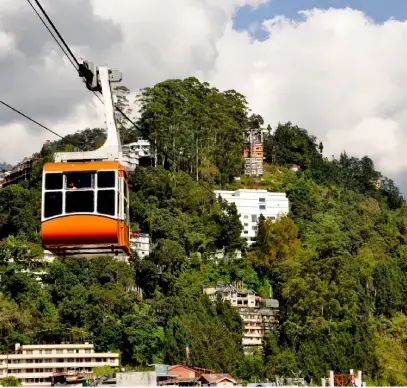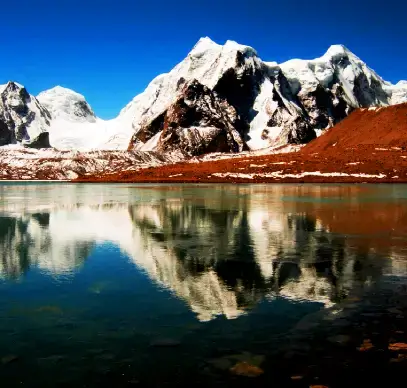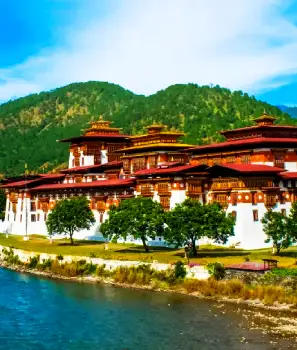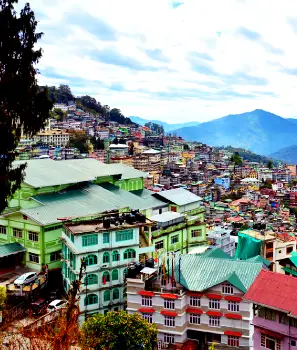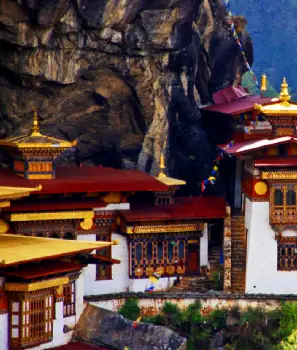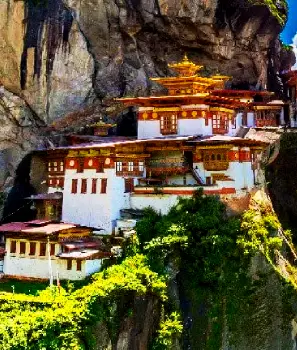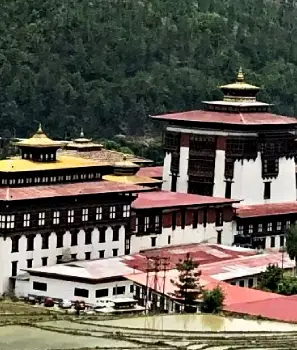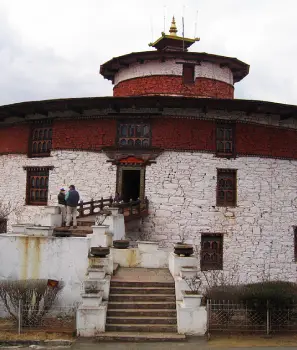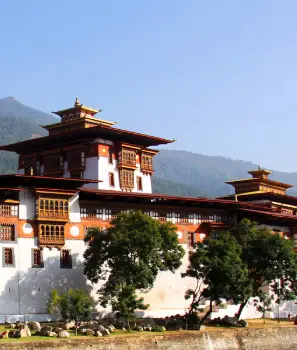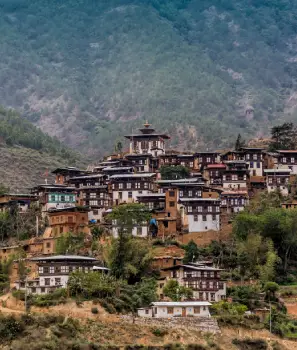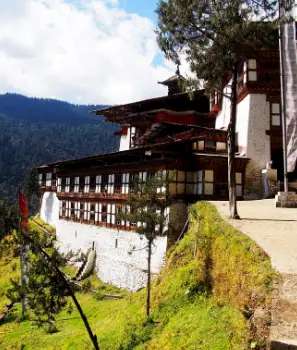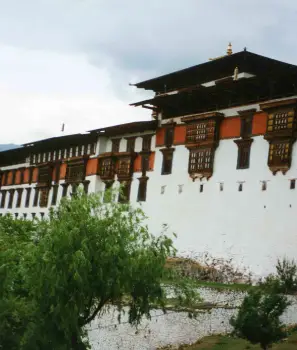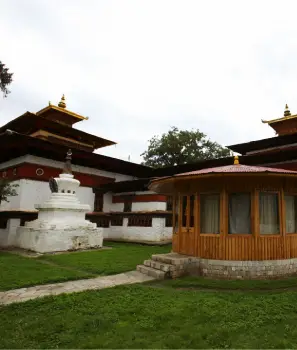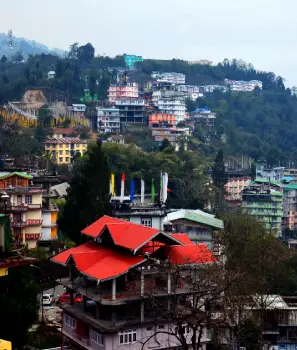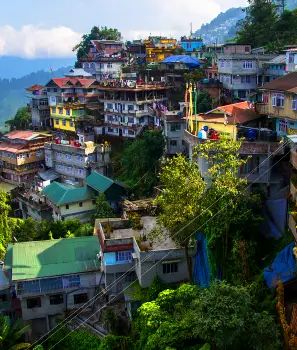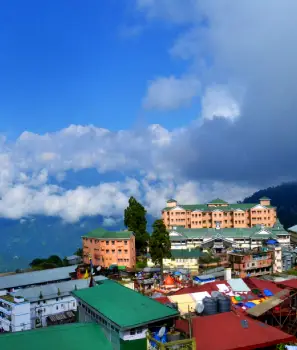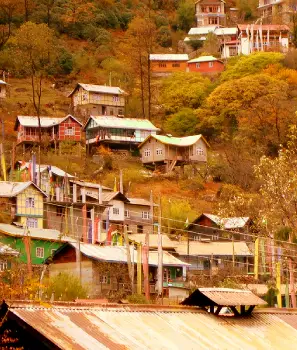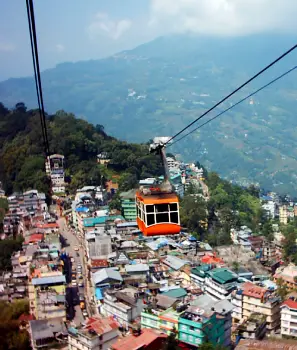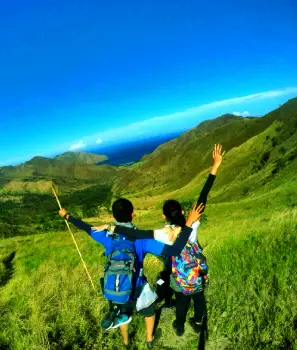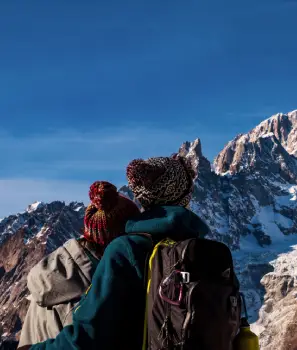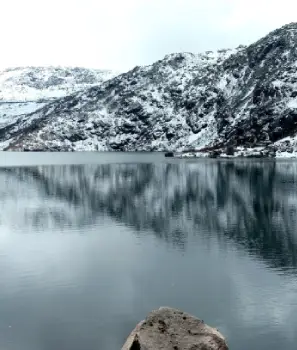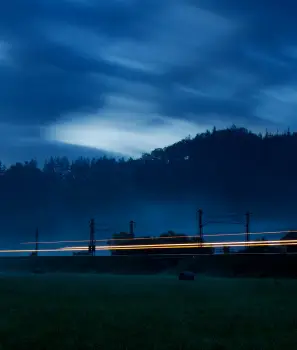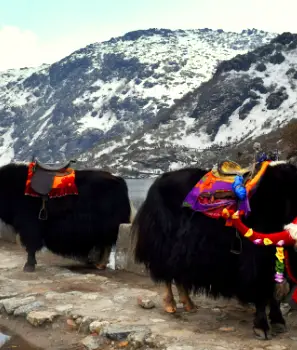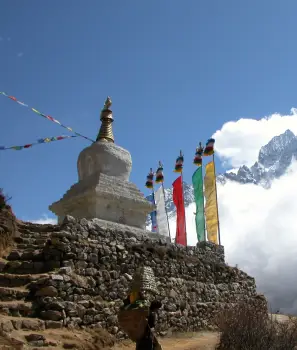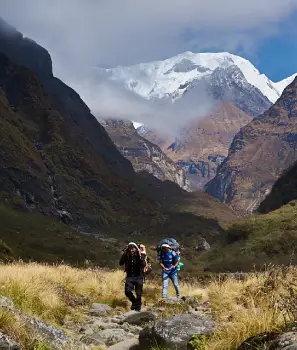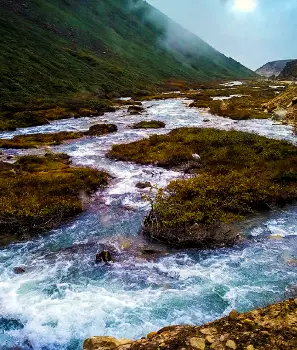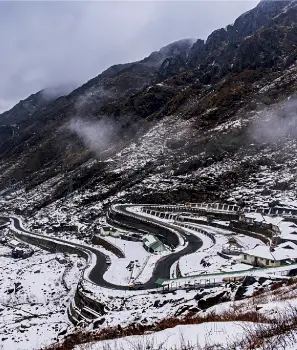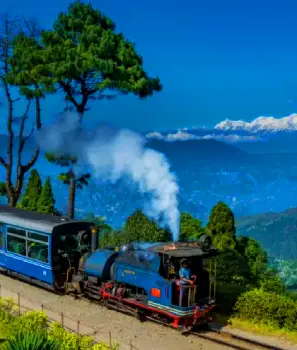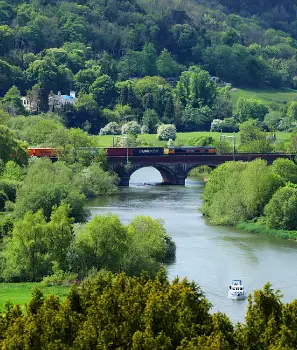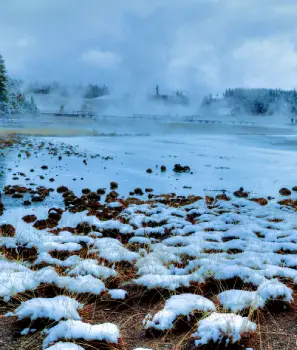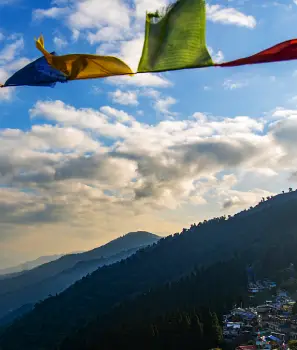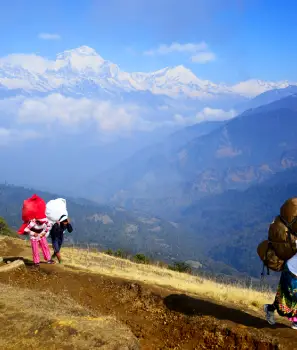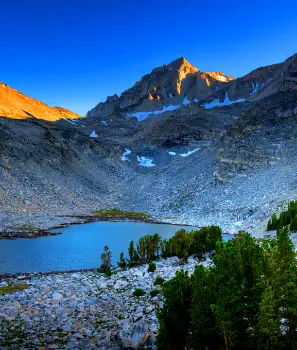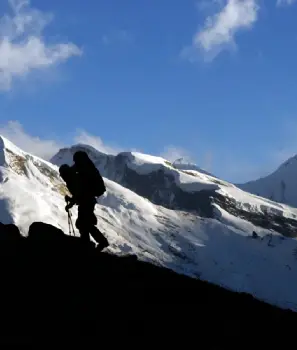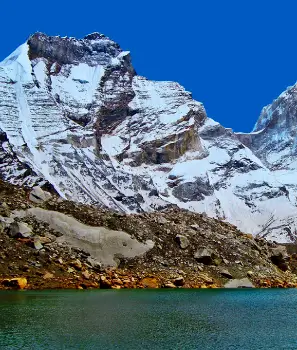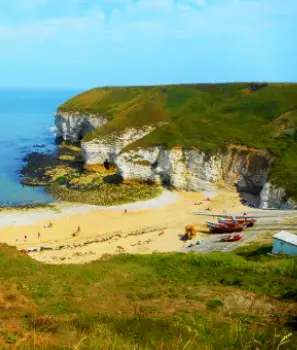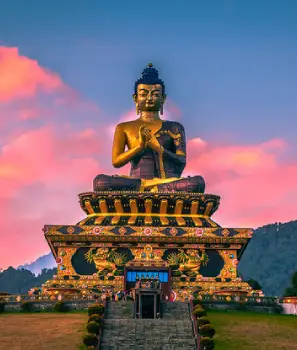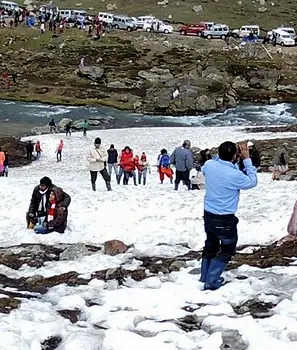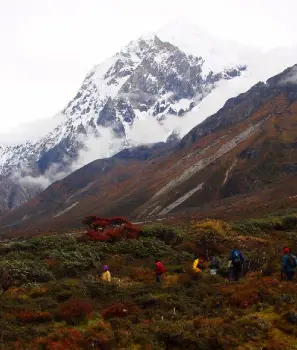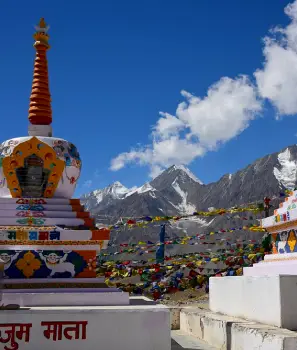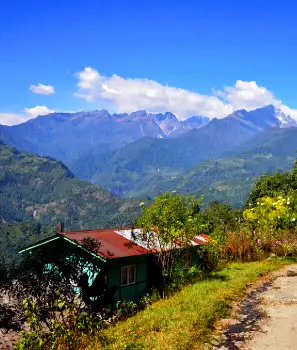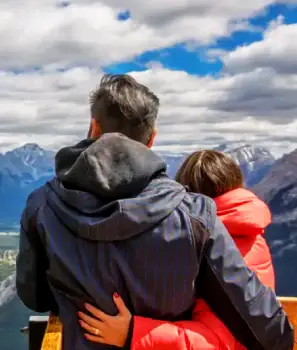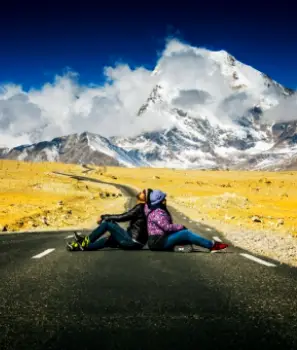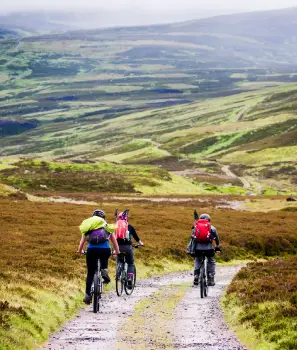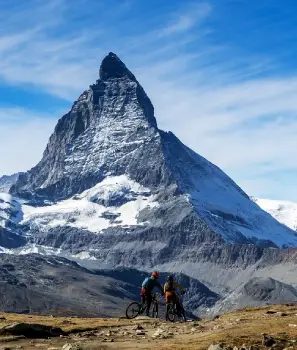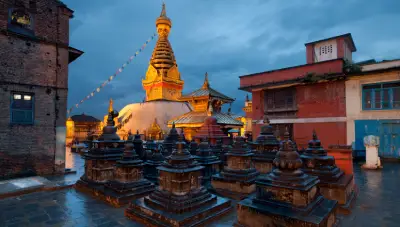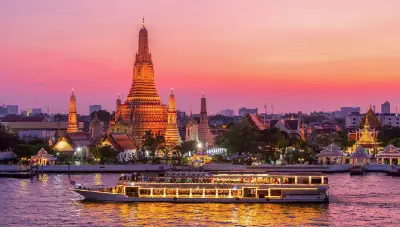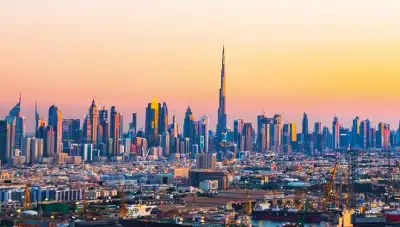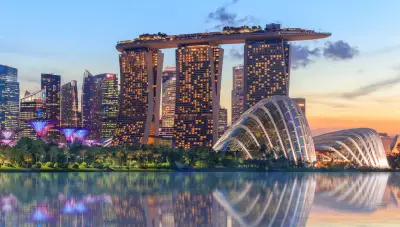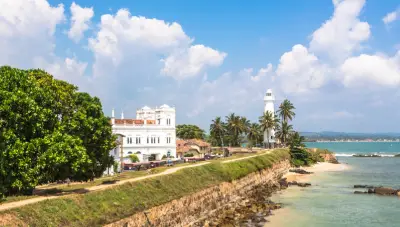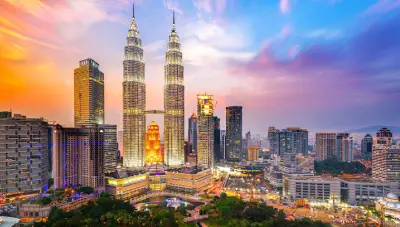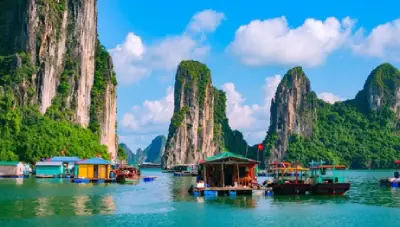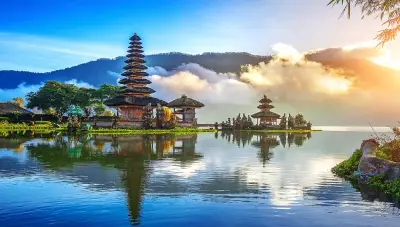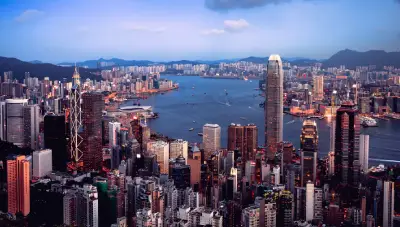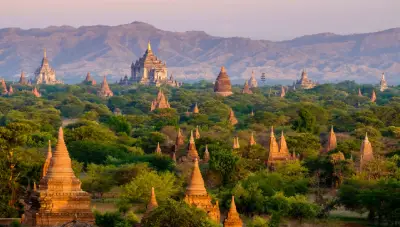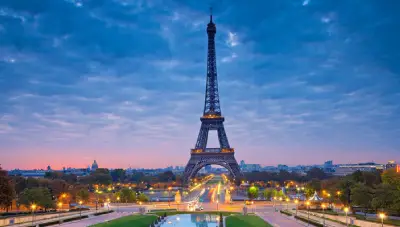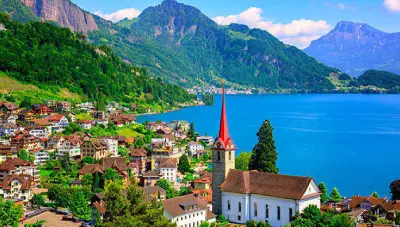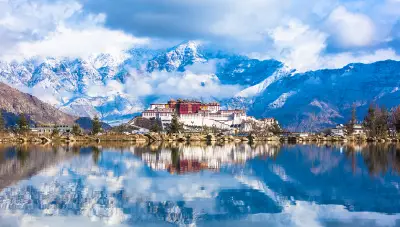At a distance of 11 kilometers from the Namchi district of Sikkim, Tendong Hill is situated at a height of 8.530 ft. The hill is located above the village of Damthang and is a popular landmark for trekking lovers. In the Lepcha language Tendong means ‘An upturned horn’. At the top of the hill there is a monastery as the beautiful and quiet atmosphere of the hills has attracted many Buddhist Lamas over the years who come here to meditate among its serenity.
There is even a watch tower which provides a 360 degree view of the surrounding areas. You can view Singalila range in the west, Chola range in the east, parts of Gangtok, Darjeeling and even West Bengal!
The beautiful hill top of Tendong can only be reached by trekking and it is a long one. The whole trek from Damthang to Tendong is around a good 6 kilometers so brace yourself. Tendong is a beauty so you will not be bored during your walk. The hill is surrounded by lush trees of Magnolia and Rhododendron, and has a number of species of birds and wildlife.
The place is not only scenic and quiet; it is also significant for the local people. According to a local folklore, during a particularly bad flood the hill raised itself to protect the people of the town from the waters and so the local people pray to the hill during every rainy season for safety.
To reach the hilltop, visitors have to walk up the hill for about 250 meters.The Samdruptse Hill, meaning “wish-fulfillment” is popular among tourists for a reason. With a height of 138 ft. it has the tallest statue of Guru Padmasambhava in the world, the patron saint of Sikkim, and is therefore also a popular pilgrimage site for the followers of Buddhism.
Guru Padmasambhava was one of the founders of Tibetan Buddhism and is highly revered. The foundation stone for the statue was laid by the 14th Dalai Lama in 1997. The towering statue is painted in gold and copper paint and shines when it's sunny. Below the base of the statue are a monastery and a prayer hall, where the monks reside and chant prayers. The locals believe the hill to be a dormant volcano and the only way to stop it from erupting is through constant prayers and considers it to be sacred.
The historical structure is made up of stone and wood and has suffered some damage due to an earthquake in the area. A new monastery is now built nearby the old structure. The place has a calm and spiritual atmosphere which makes for an ideal place to meditate and listen to your inner voice. The monastery is named Ngadak which means ‘promise’ and signifies that a person who visits the monastery promises to come back again.
Siddheshwar Dham
This tourist attraction in the state of Sikkim is built by the Sikkim government to enrich its tourism. The Siddheshwar Dham is at a distance of 5 kilometers from Namchi and is perched on top of the Solophok hill.
The major attraction of this place is the 108 ft. tall statue of Shiva. The statue is surrounded by replicas of the 12 Jyotirlingas. These are holy places for the devotees of Hinduism with the temples spread all over the country. Popularly called the Char Dham, the four major temples include Puri Jagannatha in the east, Dwarka in the west, Badrinath in the north and Rameshwaram in the south of India.
The Dham at Namchi showcases the 12 major temples at one site. The forests of Sikkim are considered sacred by the Shaivites. They believe it to be the place where Arjuna of the Pandavas fought a duel with the hunter form of Shiva called Kirateshwara and earned the God’s blessings before the battle at Kurukshetra.
Best Time to Visit: The ideal time to visit is during the months of October-May.
Timings: 8am to 7pm.
Tarey Bhir
at a height of 10,000 ft. Tarey Bhir in South Sikkim is a cliff that overlooks the mountain ranges at Darjeeling and Kalimpong of the Himalayas. At a distance of 16 kilometers from Namchi, the cliff is an offbeat destination in Sikkim. The cliff has a long stone ridge where you can take a walk and immerse yourself in the beautiful landscape that surrounds the place.
Bhir is situated in the village of Sadam and resembles the Great Wall of China in appearance. At the end of the stone pathway, you can get a view of the surrounding places through a watchtower. You can view the snowy mountains in the north, Kalimpong in the east, and the confluence of Teesta and Rangeet rivers in the south. From up above you can also catch a glimpse of the state’s popular tea garden, as you will see later.
Best Time to Visit: The ideal time to visit is during the months of October-May.
Temi Tea Garden
Spread across an area of 440 acres of land, at an altitude of 4,000 to 6,000 ft. sits Sikkim’s only tea garden. It is one of the best places to visit in South Sikkim. The tea garden is situated among the Tendong mountain range and is one of the finest producers of organic tea in the world. The tea of Temi secures a high price and high demand at International tea auctions for its amazing quality.
The story of its origin is quite interesting and goes decades back. When China invaded Tibet, a number of Tibetan refugees found shelter in Sikkim. The then king of Sikkim started a tea plantation as a means to provide employment to the refugees. The plantation started at the Kewzing village in the town of Ravangla, which was later shifted to Temi by the Sikkim government in 1969, and has been thriving ever since.
The tea garden produces a total of 100 metric tons of tea annually and cultivates various types of tea such as black, white, green, and oolong tea. When you visit the garden make sure to visit the tea factory nearby where you can learn about tea production and processing, while you walk through the quiet villages of the area.
During the month of November, the state tourism department organizes a Cherry Tea Festival at the tea garden, which includes various cultural and ethnic programmes, and traditional Sikkimese while you enjoy the beautiful Cherry blossom trees at full blossom. You can also partake in the various adventure activities that are offered such as paragliding, hiking, zip lining, etc.
Best Time to Visit: The ideal time to visit is during the months of October-May.
Ralang Monastery
The Ralang Monastery is a group of 2 monasteries of the Kagyu sect of Tibetan Buddhists and is 6 kilometers from Ravangla. The Old Ralang Monastery was built in the 18th century by the 4th monarch of the Kingdom of Sikkim to mark his successful pilgrimage to Tibet. When he returned the Karmapa or the head of the Kagyu sect, performed a ritual called the Rabney in which he scattered grains from the Tsurphu Monastery. The grains which were thrown from the monastery landed at the place where the Old Monastery of Ralang now stands.
Since the path to the old monastery is quite challenging to walk, to make the monastery accessible to people a new Ralang Monastery has been created nearby. It is around 3 kilometers away from the old one. The new monastery was constructed by the 12th Gyaltsab Rinpoche and is called the Palchen Choeling Monastic Institute. It is one of the biggest monasteries in Sikkim and was established in 1995 and contains important buddhist thangka(s) and paintings.
The monastery is constructed in Tibetan style and welcomes thousands of devotees every year. The monastery hosts the Pang Lhabsol festival to honor and pay thanks to the mountain spirit of Khangchendzonga. The festival is celebrated in the 7th month according to the Tibetan calendar every year. The monastery is also known for performing the ‘Kagyed Chham’ dance performed by the monks wearing masks and traditional attires and depicting stories of Buddhist mythologies. It is not only a place of serenity and calmness but also offers an amazing view of the mountain ranges of Khangchendzonga, Pandim and Siniolchu.
Best Time to Visit: The best time to visit is during the months of April-May. August-September if you want to witness the festival of Pang Lhabsol.
Timings: 8am to 5pm
Borong and Ralong Hot Springs
The Borong and Ralong hot springs are popular tourist attractions of South Sikkim. They are two separate springs located at a distance of 7 kilometers from each other and are also known as Borong Cha-Chu and Ralong Cha-Chu. The springs are amazing spas offered by nature and are based along the Rangeet river. Water in these springs are rich in sulfur which means they contain antifungal and antibacterial properties and are good for healing the skin.
The Ralong hot spring is an hour long walk from the Ralang monastery. The treks to the springs are sure to excite trekkers with the amazing trails filled with luscious trees, birds, beautiful butterflies and the amazing view of the surrounding hills. The trek to Borong might be a little steep and strenuous but the end result is worth it. If you wish to stay for long, temporary huts are also available nearby but you will need to carry your own sleeping bag and other necessities. Go indulge in this all-natural spa and let it melt away your stress.
Best Time to Visit: The best time to visit is during the months of December to February
Maenam Wildlife Sanctuary
Sitting at a height of more than 10,000 ft. the Maenam Wildlife Sanctuary covers an area of 36.34 square kilometers. The sanctuary is known for its range of medicinal herbs and plants and is a temperate forest. It houses a number of species of flora and fauna. Wild Orchids, Rhododendron, Oak and Chestnut are some of the flora of the area. Prominent wildlife of the sanctuary include the Red Panda, Goral, Barking Deer, Civet cat, Leopard cat, and birds like Blood Pheasant, Common Hill Partridge, Magpies, and the Black Eagle.
Trekking to the sanctuary is a popular activity. The trek starts from Ravangla through its beautiful alpine forests and provides spectacular views of the mount Khangchendzonga and the Teesta river. The whole trek up to the sanctuary is about 12 kilometers long and can take up to 4 hours to finish, but fear not you will be mesmerized by the captivating landscape that Maenam has to offer. Upon reaching the top there is also the Maenam Monastery that you might want to visit.
Best Time to Visit: The best time to visit is during the months of April-June.
Buddha Park of Ravangla
With the initiative by the government of Sikkim to increase the religious tourism of the state, the Buddha Park of Ravangla was born. The park is also called the Tathagata Tsal and was constructed by 2013. It houses a 130 ft. high Buddha statue which is the main attraction of the park which can be seen from all sides of Southwest Sikkim and certain areas of West Sikkim.
The statue was blessed by the 14th Dalai Lama in 2013 and was placed to mark the 2550th birth anniversary of Lord Buddha. The park is situated in the religious complex of the Rabong Gompa and is one of the stops of the Himalayan Buddhist circuit. The museum within the complex displays Buddha’s life in 2 different styles. There is also a prayer hall and a meditation center for those who wish to pause for a bit and bask in the spiritual atmosphere of the place. The park with its beautiful pathways and perfectly manicured lawns also offers some amazing sight of the Himalayan ranges of Khangchendzonga, Pandim, Siniolchu and mount Kabru.
Best Time to Visit: The ideal time to visit is during the months of March-June.
Timings: 9am to 6pm.

 +91-9212553175
+91-9212553175 Plan Your trip
Plan Your trip













